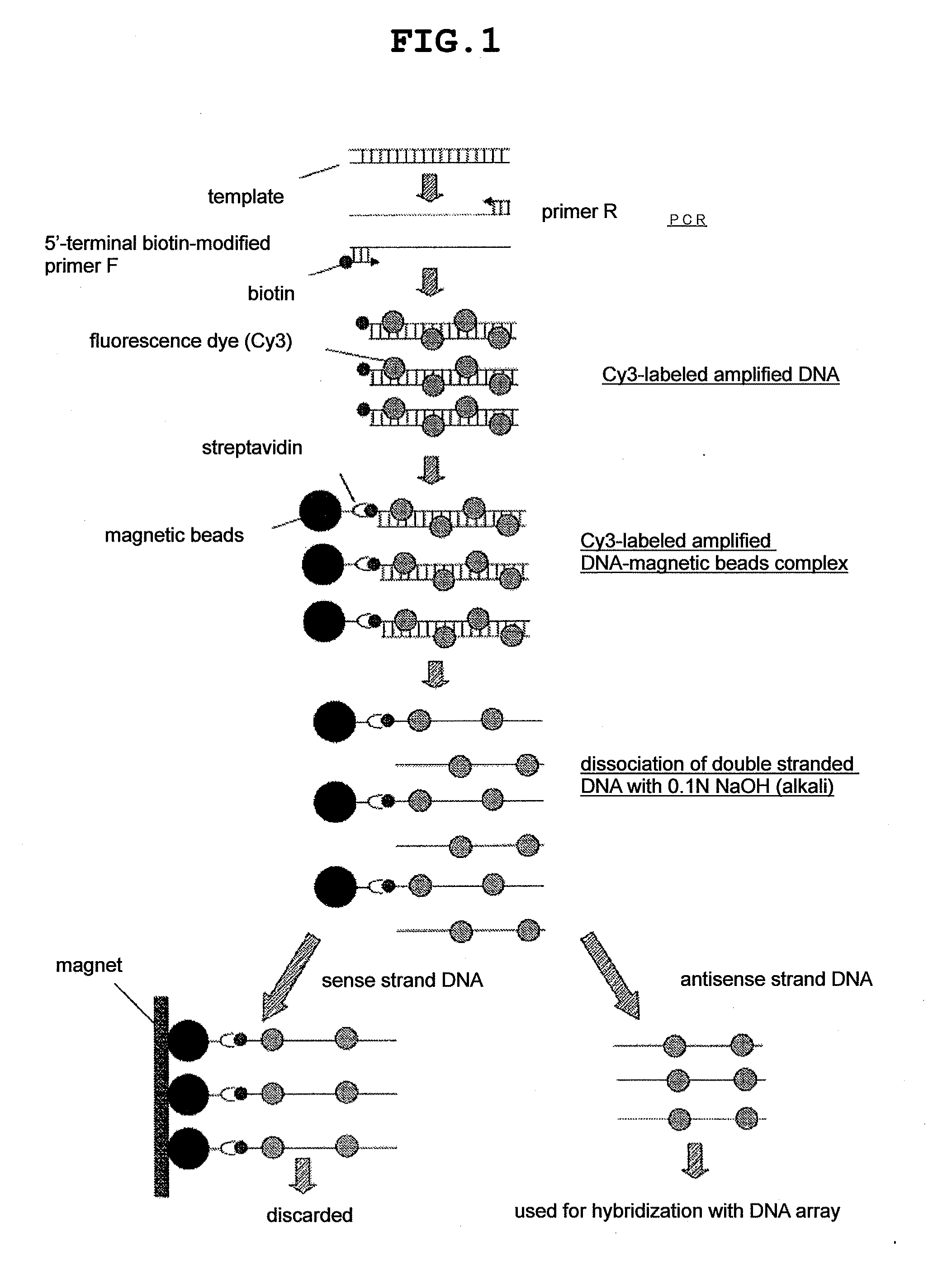Primer set and probe for detection of human papillomavirus
a human papillomavirus and probe technology, applied in the field of primer set and probe for human papillomavirus detection, can solve the problems of low stability, low reliability of methods, low sensitivity, etc., and achieve high specificity, high sensitivity, and rapid and convenient detection
- Summary
- Abstract
- Description
- Claims
- Application Information
AI Technical Summary
Benefits of technology
Problems solved by technology
Method used
Image
Examples
example 1
Design of Primer and Confirmation of Specificity
[0076]The gene sequences of HPV and G3PDH (glyceraldehydes triphosphoric acid dehydrogenase) to be used as internal standard were obtained from public database. The GenBank accession numbers of the 24 kinds of gene sequences used in the present invention are shown in Table 2.
[0077]A primer set satisfying the following criteria was designed based on the sequence of each gene: The melting temperature (Tm) is within the range of 60-70° C. (when the Nearest Neighbor method is used. Na+ Conc.: 50 mM); the length of amplification product is within the range of 100-500 bp; the GC content is within the range of 50-60%; it does not contain a sequence having high homology with other kinds of HPV; it does not form a secondary structure in a molecule; and primers do not hybridize with each other. In this way, primer sets specific to each of HPV and G3PDH were designed.
[0078]Oligonucleotide DNA was synthesized by a DNA synthesizer based on the sequ...
example 2
Design of Probe
[0084]A probe (sense strand DNA) satisfying the following criteria was designed within each PCR amplification region of the 23 kinds of HPV and G3PDH: The melting temperature (Tm) is within the range of 72-78° C. (when the GC % method is used. Na+ Conc.: 50 mM); the length of probe is within the range of 69-71 bp; the GC content is within the range of 45-55%; it does not contain a sequence having high homology with other types of HPV; and it does not form a secondary structure in a molecule. In this way, probes specific to each of HPV and G3PDH were designed (Table 3).
[0085]Oligonucleotide DNA was synthesized by a DNA synthesizer based on the sequence of the probe shown in Table 3.
example 3
Preparation of DNA Microarray
[0086]Each of the 24 kinds of probes synthesized in Example 2 was mixed in the composition shown in Table 6, spotted on a glass substrate coated with poly-L-lysine with a commercially available contact or non-contact type spotter (SpotArray or Piezorray: PerkinElmer) in the arrangement shown in FIG. 3 (2 spots for each probe) to give a DNA microarray for detection.
TABLE 6probe (100 μM)5μL20 × SSC3.75μLDDW16.25μLTotal25μL
PUM
| Property | Measurement | Unit |
|---|---|---|
| temperature | aaaaa | aaaaa |
| temperature | aaaaa | aaaaa |
| temperature | aaaaa | aaaaa |
Abstract
Description
Claims
Application Information
 Login to View More
Login to View More - R&D
- Intellectual Property
- Life Sciences
- Materials
- Tech Scout
- Unparalleled Data Quality
- Higher Quality Content
- 60% Fewer Hallucinations
Browse by: Latest US Patents, China's latest patents, Technical Efficacy Thesaurus, Application Domain, Technology Topic, Popular Technical Reports.
© 2025 PatSnap. All rights reserved.Legal|Privacy policy|Modern Slavery Act Transparency Statement|Sitemap|About US| Contact US: help@patsnap.com



